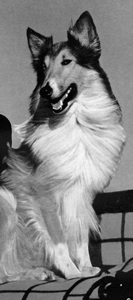A simple way to describe human experience? Stereophonic. There's never just one speaker, even when it's the voice in your own head. We pick up on more than we may ever know, and we often don't even know where what we know comes from. This has important implications for how we think about the creative process.
To begin where all good things begin: a story from high school.
When I was a junior, I had this really old, heavy Mac laptop. The only thing I used it for was pirating music for my iPod classic, which was also heavy and old. But the iPod had 128 aging gigabytes, and I figured if the Feds ever busted through the front door to arrest me for downloading too many Pavement albums, I could just smash the laptop before they made it to my room. I didn't care about it, and I assumed it didn't care about me.
One day the computer just stopped turning on. I had no idea why. No amount of charging, prodding, or troubleshooting could convince it to revive. Whatever. I stuck it in the closet and went about my life. I figured it had died a natural death and I'd given it a respectful burial.
Okay, now flash forward a few months. I have a dream. It was less dramatic and theatrical than the ones to come, but the message was clear in that nonsensical way dreams convey their meaning: The computer was ready to be turned back on. I woke up. It was 6 a.m. and pitch black. I stumbled my way to the closet and picked up my dead computer. I pressed the power button and it made that deep, resonant baritone gong noise that Macs make when they wake back up. I sprinted to grab my adapter cord to mainline more pirated music to my iPod classic.
I closed the computer when it was time to leave for school, and when I came back home it stayed dead. A weird blip, I thought. I put it back in the closet and forgot about it again.
A few months later I had another dream that was a bit more of a production. There were white lights surrounding the computer, and the gong sounded like it was sung by a church chorus. But the message was the same: The computer was ready to be turned back on. This time, I woke up with no doubt about the truthfulness of the dream. My Lazarus Mac came back to life again.
This happened one more time. The computer stayed dead and then I had a dream and it turned back on. I eventually took it to the Apple Store where a very patient employee listened to me explain my peculiar situation, said something along the lines of, "Yeah, man, this laptop is toast," and suggested I just get a new one.
I scoffed at his lack of a deeper understanding of the metaphysics of it all. What a philistine! Instead, I tried to write a short story about a guy who mind-melds with a computer. The people who read it told me it was terrible. The dumbest thing they ever read. Sometimes a reverent silence is the best response to the unexplainable.
We know more than we know. But where does it come from?
There's a reason why The Illiad and The Odyssey start with an invocation of the Muses. There's also a reason why Bob Dylan described the process of writing "Like a Rolling Stone" as just "vomiting" the words out onto a page when inspiration suddenly struck. In the only good LinkedIn post I've ever read, the guy who wrote the Chili's "Baby Back Ribs" jingle even talked about how he wrote the song in five minutes as it kind of just poured out of him.
More examples abound: Michelangelo thought that the statue was already in the marble, he just needed to scrape off some of the excess material to reveal it. William Blake fiercely denied that he was the author of his own poems; in his words, he was just transcribing what angels were whispering in his ear. Octavia Butler drew heavily from her dreams as inspiration for her stories.
I'm cherrypicking here, but it's actually because, by and large, there are more examples that can possibly fit in a page of the artistic process being described as something impersonal, something surprising and unforced. More of an openness to an experience than a conscious straining effort to accomplish something.
What's illuminating about reframing creativity like this is that it actually requires us to pay closer attention to moments when we are least certain about who's in charge of the ideas flowing through our brains. Our mental model (at least mine) as we go through our daily lives is that we're the author of our own actions. The creative process is an instance where that mental model might briefly fall apart.
This has implications for any and all of us looking to cultivate a stronger creative presence in our own lives. Especially given the fact that not every piece of art ever made is the product of a strike of inspiration. Sometimes it's the opposite. A long, protracted fight where you struggle to find the right combination of words and you edit, and edit, and edit until you finally give up and call it quits. It might be easy and inspired, or it might be the fight of your life. We don't really have any good way of knowing in advance which path you'll go down.
That's not for lack of trying, however. There's been a lot of noble attempts to systemize a way to tap into the subconscious where, in a lack of angels and muses, a lot of our modern practitioners of creativity assume inspiration lies in waiting. The Surrealists, led by luminaries like Andre Breton, Hans Arp, and Phillipe Soupault in the early 20th Century, formulated a technique called "automatic writing." It's as simple as it sounds. You sit down at your desk, take out a piece of paper (or typewriter) and then write with as little "psychic or conscious" intervention as possible. The goal is to let your subconscious express itself freely without the impediments of your conscious mind, which is usually depicted as an over-thinking, strict, disapproving schoolteacher. Or a micro-managing boss.
(A side note: there is so much interesting history that predates the practice of automatic writing. Spirit writing, or "Fuji," had been in practice in China since the Song Dynasty (960-1279), where one uses a suspended sieve to guide a stick that writes characters in sand. It's a meditation tool and a spirit-summoning tool that predates the Ouija board by a few centuries. The court astronomer to Elizabeth I, John Dee, used a similar tactic to dictate the 16th Century Enochian language, a grammar bestowed upon Dee by Enochian angels that allegedly included directions about where to find the elixir of life in the Glastonbury ruins. Arthur Conan Doyle, writer of Sherlock Holmes, was also a big proponent of this way of thinking, primarily through séances of dubious veracity.)
Automatism grew beyond just writing, too. Joan Miró and Salvador Dalí championed automatic drawing as a way to more directly connect with new, more creative parts of their psyches.
There's also the wide-ranging influence of the I Ching (also read as The Book of Changes), a Chinese divination text in which the reader would offer the book a question, toss coins or yarrow sticks, refer the result of the cast coins or yarrow sticks back to the books symbolic structure, and then use that symbol to receive guidance on the question. The I Ching's huge importance in world culture lies well beyond the narrow field of artistic practice, but it provides another example of how certain artists sought to lessen their control over their creative output.
John Cage's Music of Changes was composed using the I Ching (as was almost all of of Cage's work post-1951) as a way to weave indeterminacy into the musical piece. He'd consult the I Ching to make key decisions about its structure, leaving things like duration and dynamics charts up to chance.
Alongside Cage, Jorge Luis Borges used the I Ching extensively to explore the interplay of chance and determinism, a frequent theme of his labyrinthine stories which often branch out into multiple possibilities and alternate pathways. But this was indicative of a particular period in what's broadly construed as a countercultural arts movement. Cage, Borges, Phillip K. Dick, Joni Mitchell, I.M. Pei, Herman Hesse, and more follow in the Surrealist lineage at least insofar as their creative practices involved the deliberate incorporation of techniques to create chance and surprise into their art.
But what are we trying to do when we add a dash of randomness, or bypass our conscious, thinking mind?
For my own part, I feel that the evidence is overwhelmingly in favor of an idea of creativity that thrives best when outside of a fully systemized process. There is a lengthy body of research that indicates the left hemisphere is analytic-oriented (breaking things down) while the right hemisphere is synthetic-oriented (seeing things as a whole). Left for analysis, right for creativity. It would seem that, insofar as any of these techniques are effective, their goal is the same: to momentarily suppress the analytic micro-manager so that we can see things in a different light. To get our right brains right, in other words.
The easiest version of this kind of technique is trying to de-emphasize hierarchies as much as possible when engaged in any kind of generative creative activity. There's an apocryphal story of Gunpei Yokoi, one of the driving forces behind Nintendo's successful transition from card game and gimmicky toy maker to a media and entertainment behemoth, beginning each brainstorm by deliberately tossing out terrible ideas. This would be the quickest way to ease the pressure in the room and calm his fellow brainstormer's inner superegos. Just don't get too hung up on good and bad. The left brain comes later.
A group brainstorm also provides a clear example of why I think creativity is ultimately dependent on how well-attuned we are to the people, things, and ideas around us. Part of the problem with overthinking is that it continually shuts down any openness we might have to the world. We get stuck in our own heads. We fail to find the right way to respond to what's being given to us.
Angels, dreams, spirits, the subconscious, intuition—these are all different ways to explain the porosity between ourselves and our surroundings. Stereophonic. Lots of voices, some of them dream computer messages. But it's not easy to tell yourself to just stop trying to force things and let inspiration flow like an unblocked river. Learning how to attune yourself to what you know, to find the right mode of response to the world around you, is a life's work. One that requires a rigor of its own.
The version of creativity I put forward here resembles listening more than doing. Putting your ear to the ground instead of conquering your mind and body's resistance to genius. I think that's true. It's a hallmark of a micro-manager or the superego or any other dictatorial authority figure that lives inside or outside our heads that they don't listen. That's too bad. It's like the Hamlet quote, "There are more things in heaven and earth than are dreamt in your philosophy." A whole world of angels, spirits, computers, dreams, jingles, and muses. If only we can learn how to shut up and listen!




















